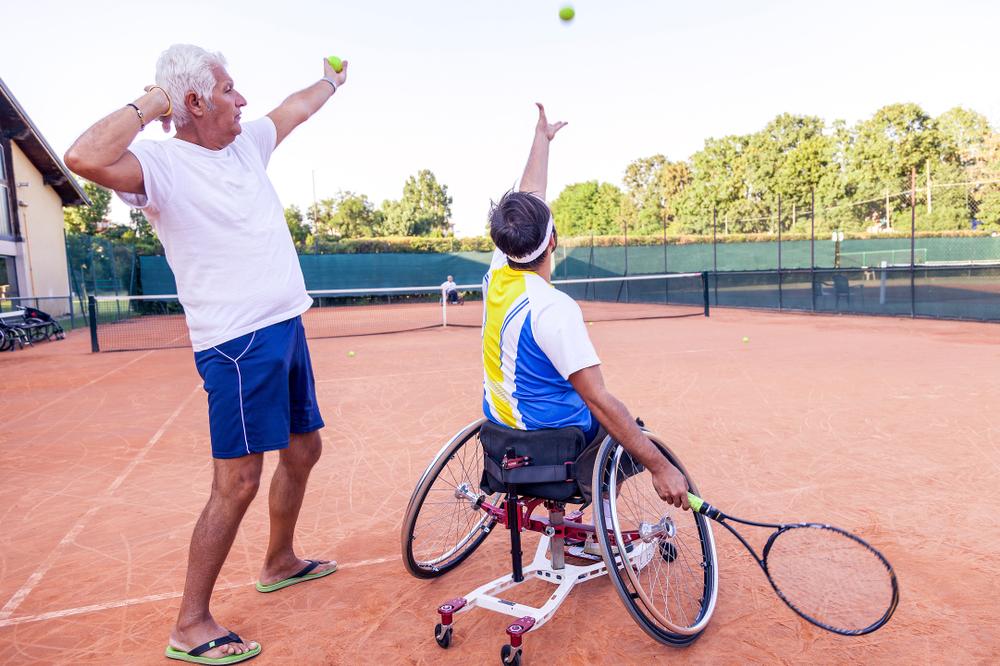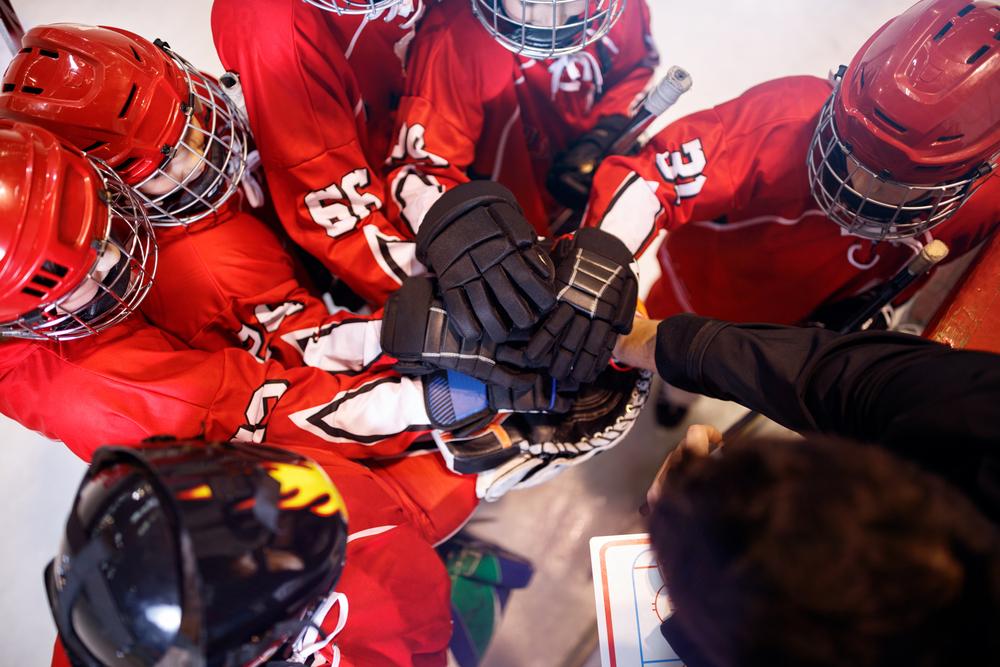 Does your team have any rituals? At first, you might be shaking your head. But think about it: Are there team chants or cheers that you do before every game? Does the team paint their faces or wear certain clothes before big meets? Do you have a certain post-race routine that you do together?
Does your team have any rituals? At first, you might be shaking your head. But think about it: Are there team chants or cheers that you do before every game? Does the team paint their faces or wear certain clothes before big meets? Do you have a certain post-race routine that you do together?
Rituals can have a positive, healthy effect on any athletic team when they’re created thoughtfully. But when rituals are left in place without consideration year after year, they can also have a negative impact on a team’s culture. Here, TrueSport Expert and President of Now What Facilitation, Nadia Kyba, MSW, shares a few ways that you can establish team rituals that lead to a more successful, cohesive, happy team.
Understand the power of rituals as a team
Sports give people a sense of belonging, and rituals within a team can amplify that and unite teammates who may otherwise not have much in common. And while you might think rituals are just superstitions that a team has before a game, they can encompass so much more than that. Rituals can be used to promote healthy behaviors, like meditating before each game or having a healthy snack after every meet. They can also be used as sports psychology tools, by creating mantras and chants that align with a team’s values and goals they’ve set for the season. And they can be fun and simply a good way of helping teammates—even the shy ones—feel a bit more connected.
Understand that rituals can have dark sides
 While rituals can be great for team bonding and may bring a team closer together, they can also alienate individuals on the team and even promote unhealthy behaviors. Some teams, for example, have rituals like public weekly weigh-ins that encourage athletes to engage in unhealthy eating and exercising practices. And some rituals, like certain snacks pre-competition, might not align with an individual athlete’s allergies, sensitivities, or cultural food choices. New athletes may also feel left out of rituals that aren’t well explained at the beginning of the season, especially when the team has many returning players. Be aware of this—and reconsider the rituals you currently have in place on your team. Make sure they are aligned with the team’s values and goals.
While rituals can be great for team bonding and may bring a team closer together, they can also alienate individuals on the team and even promote unhealthy behaviors. Some teams, for example, have rituals like public weekly weigh-ins that encourage athletes to engage in unhealthy eating and exercising practices. And some rituals, like certain snacks pre-competition, might not align with an individual athlete’s allergies, sensitivities, or cultural food choices. New athletes may also feel left out of rituals that aren’t well explained at the beginning of the season, especially when the team has many returning players. Be aware of this—and reconsider the rituals you currently have in place on your team. Make sure they are aligned with the team’s values and goals.
Create a ritual-making ritual
Some rituals evolve organically, like the whole team opting to wear school colors on game days, but it’s a good idea to sit down as a team and decide together what the best rituals and routines for your team this season should be. Together, you can vote and decide on things like team mantras, whether or not your team will do a group cheer before competition, if you’ll all wear a certain color or t-shirt to meets, and if bringing snacks to practice or game day is a good shared ritual for the team. If you’re a leader or captain on the team, you can take ownership of the process. Your coach should be invited into the dialogue, but rituals should be based on what the team as a whole chooses.
Enlist an expert to help
Ask your coach to bring experts to a practice early in the season to talk about fun and healthy rituals. A sports psychologist can be helpful in creating a positive mantra or set of goals for the team, and a dietitian may be able to help perfect the plan for healthy pre- or post-competition snacks.
Bring a mantra to life
 If one of your rituals is a team mantra—ideally one that focuses on process-oriented goals rather than outcome-specific ones—then a great ritual could be writing that mantra on t-shirts or on the back of your hands before every competition as a reminder throughout the game or race. Put it on posters in the locker room, make beaded bracelets that spell it out, write it in icing on a post-game cake or spell it out with olives on the post-race pizza. Have fun with these rituals: Lean into silly, fun ways of keeping them top of mind.
If one of your rituals is a team mantra—ideally one that focuses on process-oriented goals rather than outcome-specific ones—then a great ritual could be writing that mantra on t-shirts or on the back of your hands before every competition as a reminder throughout the game or race. Put it on posters in the locker room, make beaded bracelets that spell it out, write it in icing on a post-game cake or spell it out with olives on the post-race pizza. Have fun with these rituals: Lean into silly, fun ways of keeping them top of mind.
Yes, team cheers are great
A team chant fosters a sense of belonging, regardless of why each person is on the team and who they are outside of the team. A team cheer or chant may feel a bit silly for some people, but it really does have a positive impact on a team—and it’s something you’ll remember for years to come. Your school or team may already have one, or you could make one up as a group. Some teams lean into a team song instead. Even if you’re not a big fan of singing in public, team chants and songs can instantly create a bond between teammates, so it’s worth trying one.
Designate an ‘on-boarding’ expert on the team
When a new athlete joins mid-season, it can be intimidating to suddenly be a part of a team that essentially has a secret language. A team’s rituals, from mantras to cheers to snacks to game day attire, can be tricky for a new athlete to navigate, especially if that athlete is also new to the school. Designate one person on the team to be ‘in charge’ of helping new athletes figure out all of the team rituals and routines so that they don’t feel left out.
Check in on rituals regularly
As we mentioned earlier, rituals are a great way for a team to bond and feel closer, but they can also have negative repercussions. Having each athlete be in charge of making a post-game snack may start to feel like a burden and team mantras may start feeling more critical than motivational if the season isn’t going well. Keep a dialogue open about your current rituals and be open to them changing as the team evolves.
Plan a post-season ritual early in the season
 Often, we celebrate wins at nationals and or states, but rarely do we celebrate simply living up to our mantra of ‘finish with a smile’ at every race. Early in the season, come up with a ritual that you’ll use to close out the season, whether that’s a team party, a huddle where you all share your highlights of the season, or an email or text group that helps everyone stay in touch during the off-season. Otherwise, players may leave feeling a lack of closure on the season, and it can feel like a letdown rather than a natural break between seasons.
Often, we celebrate wins at nationals and or states, but rarely do we celebrate simply living up to our mantra of ‘finish with a smile’ at every race. Early in the season, come up with a ritual that you’ll use to close out the season, whether that’s a team party, a huddle where you all share your highlights of the season, or an email or text group that helps everyone stay in touch during the off-season. Otherwise, players may leave feeling a lack of closure on the season, and it can feel like a letdown rather than a natural break between seasons.
_____________________
Takeaway
Establishing healthy, strong team rituals is a great way to improve a team’s sense of camaraderie, but the rituals should be carefully considered and regularly revisited to ensure that they are healthy (both physically and mentally), and that everyone feels included rather than alienated.



